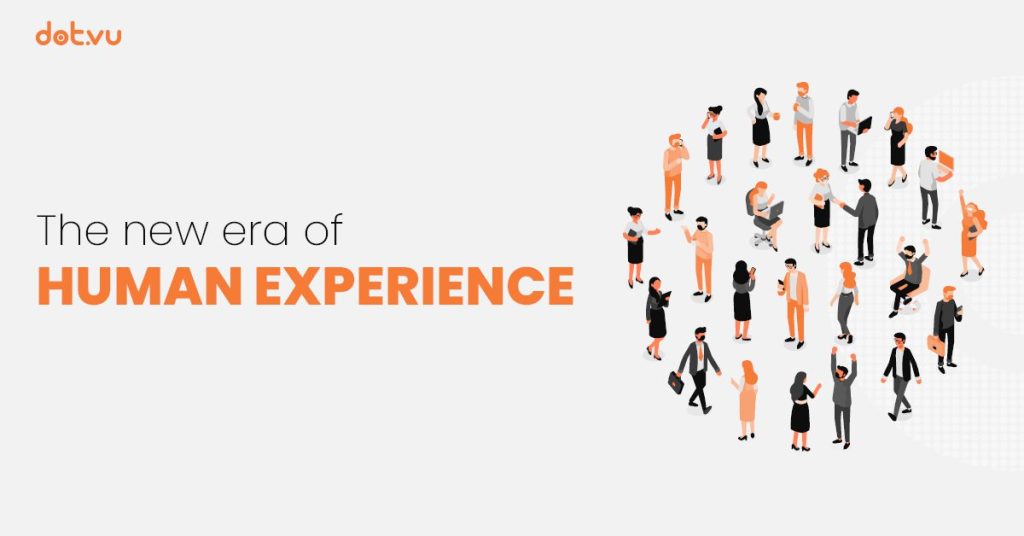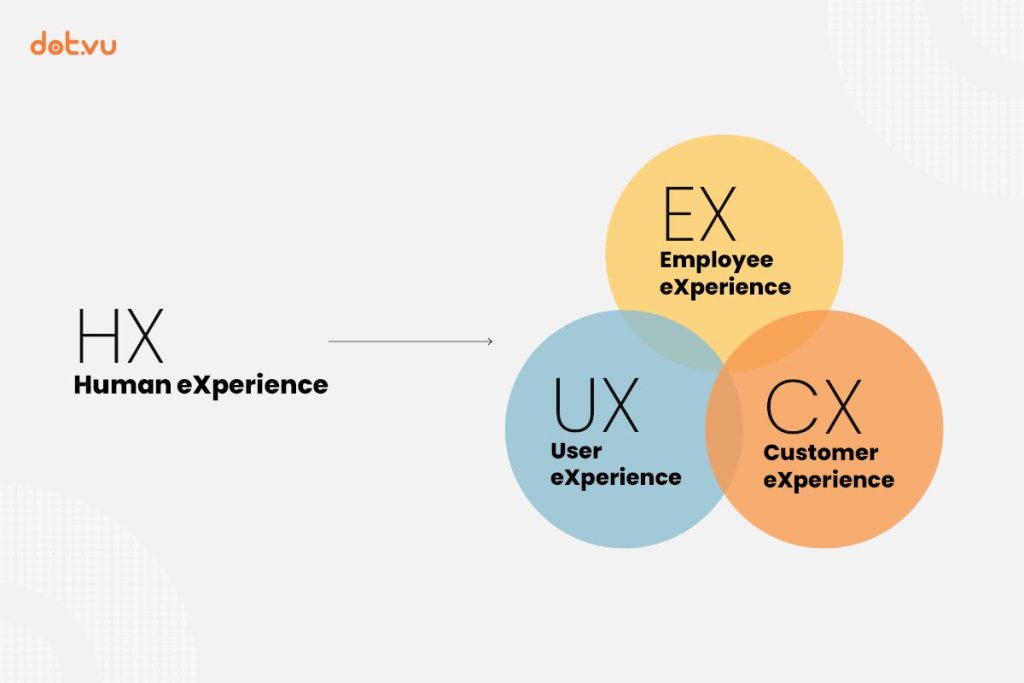
Have you heard about User Experience (UX), Consumer Experience (CX), and Human Experience (HX)? In the last few years, these digital design terms have become more and more popular to talk about, but what exactly are they, and why do you need to know the difference between them? Would you like to learn more about it and how to start applying HX not only to your design but also to your company’s culture?
Learn more about it in this blog post!
What is Human Experience?
Whether it is a website, an app, a physical product, or an instruction, humans should interact with these touchpoints in a logical way. Human Experience is a new principle that emphasizes human-centered thinking. In other words, Human Experience is about being human-focused. This can be reasoned with the belief that humans are much more than statistics or data. Human decision-making is strongly influenced by emotions, needs, and relationships they experience with brands. Generally, the concept of HX covers the whole experience a human has with a brand both physically and digitally.
Human Experience vs. User Experience vs. Consumer Experience
A user is a person who uses or operates a product, machine, or service. Thus, User Experience (UX) is how a user interacts with and experiences a product, system, or service. It includes a person’s perceptions of ease of use, utility, and efficiency. However, Customer Experience is the impression your customers have of your brand throughout all aspects of the buyer’s journey. Additionally, the customers’ view of your brand can impact sales if one of the touchpoints is not aligned with your company’s values.
Doing something for humans requires humans, thus meaning that no AI can replace humans. That is why HX creates an experience that focuses on bringing empathy and compassion into the business. According to Professor Gerald Zaltman, a Harvard Professor “95% of purchasing decisions Are subconscious”. Emotions are a vital determinator in HX; if ignored, they can negatively affect your business development.
Human Experience in Business
Measuring Human Experience can be vital for your business growth. It is essential to measure how potential customers feel about a brand, service, or experience, which can help then understand the steps to optimize the business. Convert weaknesses into strengths and seize opportunities.

However, an understanding solely about User Experience (UX) and Customer Experience (CX) is not enough anymore. To satisfy customer needs and be ahead of the competition, it is necessary to look at the whole Human Experience (HX), thus including employee satisfaction. Hence, understanding HX will allow us to acknowledge the driving emotions behind the decisions and not only look at the numbers. Moreover, it will enable you to improve your product or service and become more human.
4 Steps to Implement Human Experience in Your Company
Human Experience is the future of business, and companies must be ready to apply it throughout their whole supply chain. A wide range of tools can enhance the human experience in a company throughout its entire journey that mirrors and matches customers’ needs.
The following steps will help you to implement Human Experience in your company:
Identify your Audience
To apply HX, you must know your audience. Your audience cannot be everyone. Thus, analyze your data to create your buyer personas. In particular, when creating buyer personas, it is essential to focus on getting the details. Pro tip: Start looking beyond basic demographics and focus on customer qualities, values, things that drive and inspire them.
Be Inclusive
A big part of HX is inclusiveness. Have you considered if people with disabilities can use your product or service? Have you given thought if your design is ethical for everyone? That is a must-have if your company wants to be human-centered.
Have Empathy
HX is about being empathic throughout the customer journey. It is essential to consider the struggles and pain points of a customer. Try to get to know your customer and think of yourself as “being in their shoes.”
Collect Data
Finally, after following the above steps for implementing Human Experience in your company, it is necessary to collect as much qualitative data as possible. The three key elements you should consider for data collection are ease, recommendation likelihood, and satisfaction. Thus, to improve HX in your company, Interactive Content, such as guided selling, quizzes, and polls, can help to gather all the necessary information with zero and first-party data.
Are you ready for the Human Experience era?
In this era, where new companies are occurring every day and saturating the market, it is even more important to stand out. Traditional sales and marketing tactics will not bring as much success as modern ones. Thus, companies must start thinking about how to connect with their customers on a much more personal level. As a result, Human Experience is the future, the way for customers to connect with brands and create human-centered businesses.
Get started to collect customer behavioral data through Interactive Experiences and our Interactive Content Platform. Learn more about what Interactive Content can do for you!



